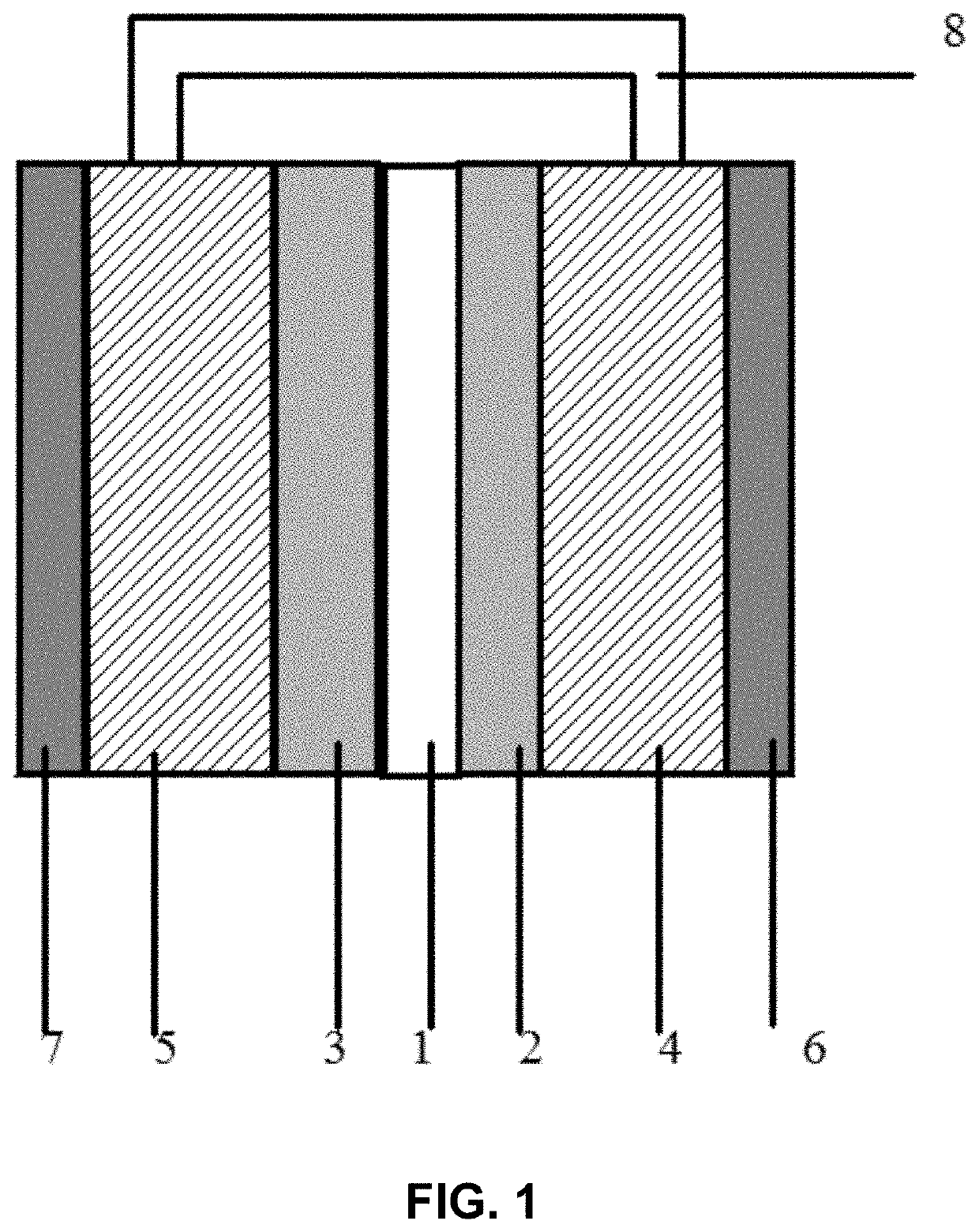Zinc-iodine battery structure
a zinc-ion battery and structure technology, applied in the field of zinc-iodine battery structure, can solve the problems of limited circulation capacity, high cost of lithium ion batteries of solid electrolyte, and harm to the environmen
- Summary
- Abstract
- Description
- Claims
- Application Information
AI Technical Summary
Benefits of technology
Problems solved by technology
Method used
Image
Examples
Embodiment Construction
[0022]The technical features of the present invention are further described with reference to the drawing and the specific embodiments.
[0023]As shown in FIG. 1, a zinc-iodine battery structure includes a housing, a cavity is formed in the housing, and a cation exchange membrane for dividing the cavity into two parts is disposed in a middle of the cavity; glass fiber components for protecting the cation exchange membrane are disposed on both sides of the cation exchange membrane; graphite felts impregnated with a ZnI2 solution are disposed on outsides of the glass fiber components; carbon plates serving as current leading-out channels of a battery are disposed on outsides of the graphite felts; a return flow channel is disposed between the two graphite felts; and the return flow channel has a length-diameter ratio greater than 10 and a diameter ranging between 0.5 mm and 1.5 mm, which is a key to solve a change in pressure during charging and discharging.
[0024]The housing of the batt...
PUM
| Property | Measurement | Unit |
|---|---|---|
| diameter | aaaaa | aaaaa |
| diameter | aaaaa | aaaaa |
| thickness | aaaaa | aaaaa |
Abstract
Description
Claims
Application Information
 Login to View More
Login to View More - R&D
- Intellectual Property
- Life Sciences
- Materials
- Tech Scout
- Unparalleled Data Quality
- Higher Quality Content
- 60% Fewer Hallucinations
Browse by: Latest US Patents, China's latest patents, Technical Efficacy Thesaurus, Application Domain, Technology Topic, Popular Technical Reports.
© 2025 PatSnap. All rights reserved.Legal|Privacy policy|Modern Slavery Act Transparency Statement|Sitemap|About US| Contact US: help@patsnap.com

